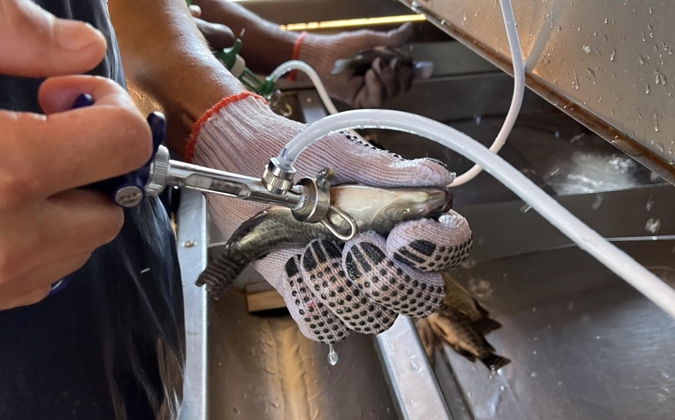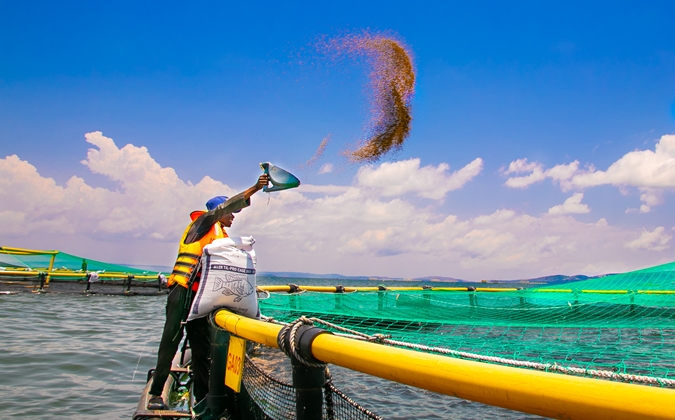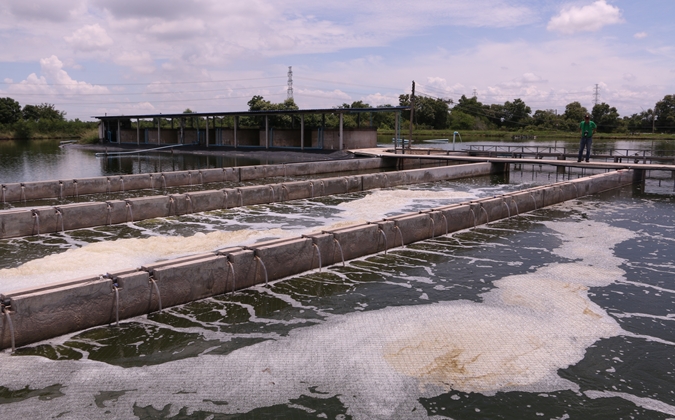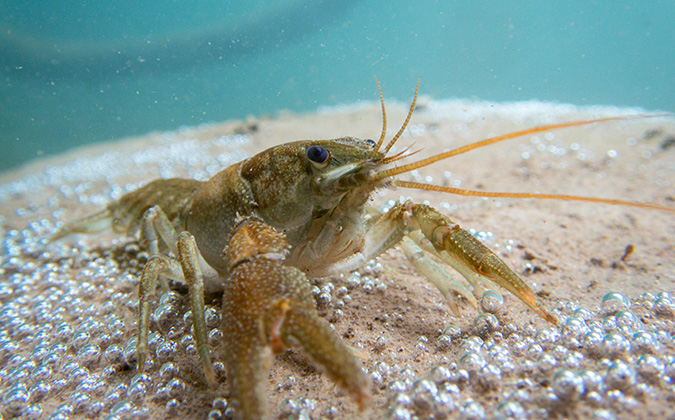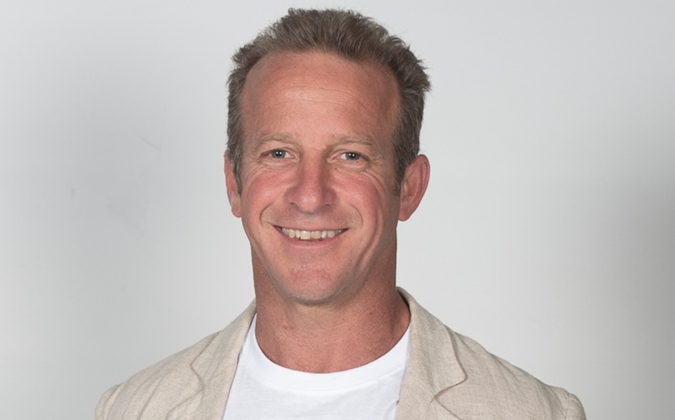
Fish Farm Forum is pleased to host this editorial page on behalf of Pharmaq.
Pharmaq
The value of veterinarians in ensuring sustainability for Africa’s fast-growing aquaculture industry
Sub-Saharan Africa is enjoying an aquaculture boom — with fish health and welfare services moving in turn to meet the sector’s needs and ensure sustainable growth. In an interview, veterinarian Brandon Spolander, BVSc, MRCVS, SAVC, MSc, owner of Aquavet Africa, talks about engaging with the growing industry and addressing important gaps.
What is your personal journey into aquaculture?
BS: I qualified as a “normal” vet, as most people understand it, but I’ve always been drawn to marine conservation. I began asking myself how I could use my veterinary skills to contribute to that space and reignite my passion for the profession. That’s what brought me to aquaculture.
For me, it’s about market disruption. Wild fisheries and bycatch are major concerns. People need to eat, and farming is here to stay, so how can we optimize it? From the inside, you can improve welfare, profitability and husbandry practices, and slowly chip away at the problems. That way, fish farming becomes a better alternative to overfishing.
How does veterinary provision in African aquaculture compare to other regions?
BS: It’s very low. A few vets dabble in aquatic medicine, but very few are fully committed. Even fewer have a broad understanding of business and aquatic production systems which can then overlay the medical aspect to provide real-world solutions in the African context. Compared to Northern Europe, there’s a massive gap in available expertise.
It’s a vicious cycle. Because the market’s small, it doesn’t attract the right people, which in turn hampers the market. That dynamic needs to change.
What’s needed to fill that gap?
BS: Certain organizations and some universities have come in and tried to help, and I think they’ve done a lot of good work. But the problem for me is that they’re not involved with the farm enough, not part of the team in an ongoing manner. It’s more a matter of coming in, seeing a host of problems, giving some clever solutions and then leaving again. There’s not that week-in/ week-out interaction with the team, so you’re not getting that incremental improvement.
What is needed is more aquatic health professionals. That doesn’t need to be a vet, but you need highly trained health professionals that really understand how to look at farm data and farm systems from a health lens, with a high frequency of interaction with the farms.
How does Aquavet Africa address this?
BS: It’s a proper team interaction. I want the farmers to have the image of “virtual vets on the farm.” A lot of them can’t afford to have a vet permanently employed of a suitable skill level, or there’s just a lack of appropriate skills around, such as if you have several big farms and just one vet. It’s about using modern technology to provide input on an ongoing basis: team meetings, data correlation and upskilling staff on the farm so that they become effective “eyes and ears.”
Can you share a recent client example?
BS: Quite often, when one is seeing a bunch of mortalities or morbidities in a cage or on a section of cages, you’re seeing it a little bit further down the clinical pathway. So you’re seeing the secondary infections, not where it started.
There was a case on a tilapia cage farm where harvest-sized fish were dying at unexpected rates over a prolonged period. The conditions didn’t explain it, but just from detailed observation I noticed fish being trapped between the feed barrier and the main net. The nature of the lesions was consistent with this husbandry issue being a primary factor in the morbidity and mortality observed, for a good portion of the losses experienced. It seemed almost too simple, but I raised the idea with the farm manager.
He suggested lifting the feed nets overnight, since they’re not used then. They did that, and within weeks, mortality from that type of problem dropped by over 50%. This kind of outcome comes from working closely with the team and understanding the day-to-day realities of the farm.
How do you build a rapport with people on the ground, which can then develop into systematic change and upskilling?
BS: You can’t show up like a traditional vet in a white coat giving orders. You’ve got to collaborate, talk through things slowly and bring the team along with you, even if you might feel something needs to be done right away. It’s important to remember that an apparently simple instruction or advice might mean big infrastructure changes for them.
I always explain that I may be pedantic — that’s my job — but I’m not there to criticize. I want to build solutions together, in a practical way that works in the African context.
Do you think that Sub-Saharan Africa has any specific advantages conducive to successful aquaculture, compared to other parts of the world?
BS: Definitely. The stable climate and freshwater resources are fantastic. But they’re underutilized, mainly due to limited financial resources.
Places like Lake Kariba or Lake Victoria offer huge potential, but many farms stay close to shore because it’s cheaper and easier. The better farming sites are farther out, which means stronger cages, bigger boats and better logistics. That all comes down to financing.
Access to diagnostics is often a challenge. How do you support fish health in that area?
BS: Basic diagnostic tools common in Norway or Scotland are rare in Africa. Histopathology is a good example; there are very few veterinary pathologists, let alone fish specialists.
But a solution is to get local laboratories to do tissue processing. We’ve managed to interact with a lab in Kenya, where they had invested in the whole digital platform for doing proper scanning but was directed on the human side. We convinced them that it wasn’t going to be a separate system to scan veterinary slides as well.
Because we are a portal for that solution, bringing in samples from Kenya, Rwanda, Uganda and all over, they were able to put a greater volume through that one pathway, so it makes financial sense for them to bother. Now, instead of having this tissue that you’re struggling to get analyzed with appropriate training, it’s centralized, digital and accessible. That bottleneck is gone. Anyone in the world can now access and assess those slides.
How do you expect to see aquaculture in Sub-Saharan Africa changing over the coming years, and what response do you envisage from veterinarians to that change?
BS: I think that you’re going to see some of the main players increasing their production quite significantly the next few years and that will be followed by other people, as the momentum in the industry will make it easier for other people to access equipment. From a veterinary point of view, I think it’s a very simple equation: more farms, more fish, more disease, more need for appropriately trained health professionals.
We’re maybe 10% of the way up the mountain in terms of production — and the same in terms of disease impact. As things grow, the demand for proper fish-health management will rise sharply.
To ensure that’s there are more professionals with an eye on fish health, how would you approach the training and upskilling aspect?
BS: We need to focus on that middle tier: people who aren’t necessarily vets but who can apply real rigor to fish health on the farm.
Even if you have more vets, unless it’s a very large farm, you won’t have one on-site every day. You need people who can monitor health, interpret data and flag problems early. Building a skilled cohort like that is critical for the sector’s future. Naturally, we do need more appropriately trained vets in the African aquatic sector as well.
Posted on: November 26, 2025




